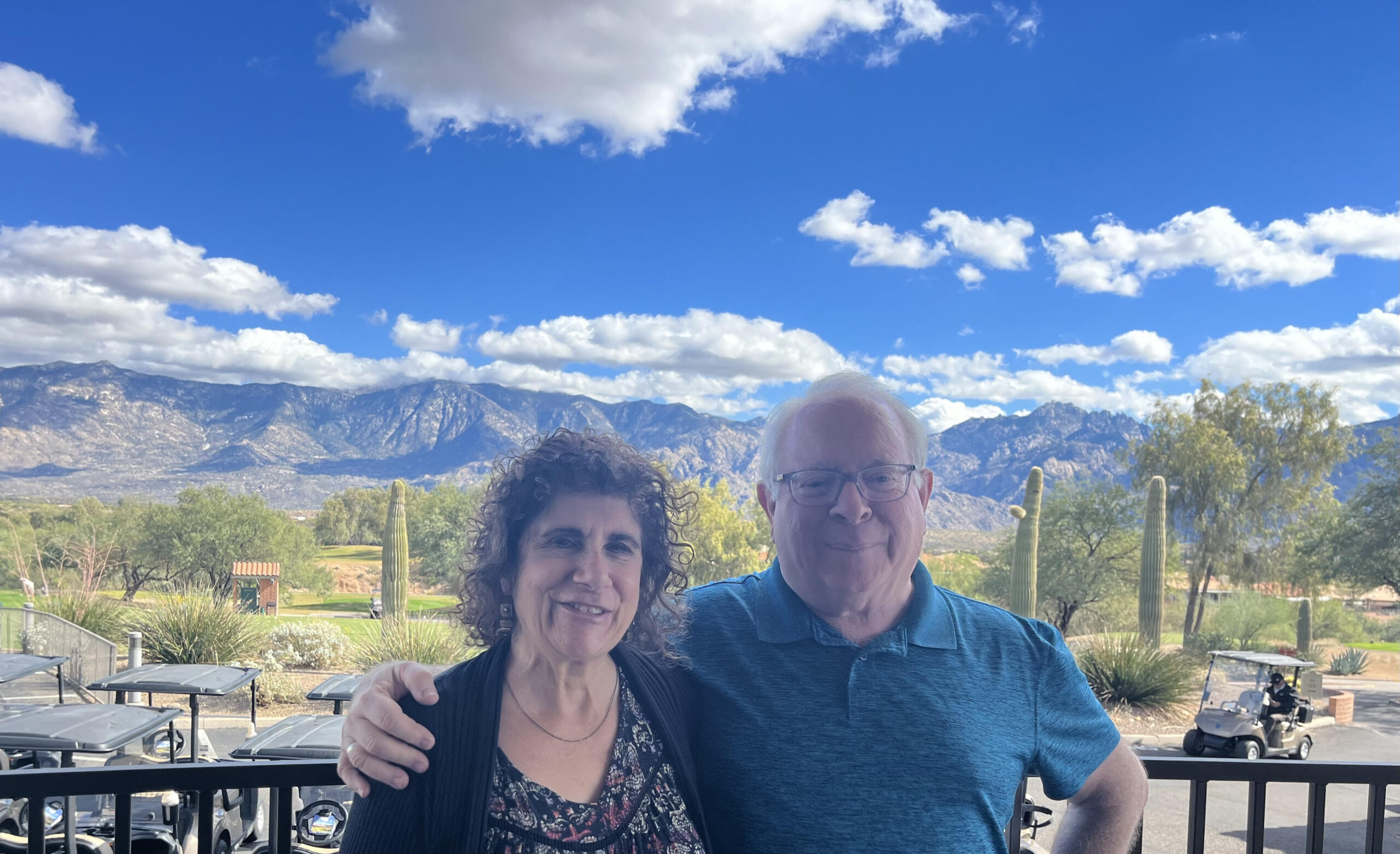
Friends, I can predict what I will see in your refrigerator on Friday.
Leftover turkey.
As a food writer once wrote in The New York Times: “Leftover turkey is a ghoulish reminder on the morning after Thanksgiving. Roasted, dismembered and carved, remnants of big bird tweak the guilt of all who dare crack the refrigerator door.”
Leftover turkey is Thanksgiving’s unavoidable by-product. By Friday at lunch, it might be turkey casserole. One evening this weekend, it will become turkey tetrazini. Saturday afternoon, it will become turkey sandwiches. On Sunday afternoon, many of us will munch on leftover drumsticks.
And so it goes, until that turkey carcass is completely spent.
This is the lesson of the days that follow Thanksgiving.
Anyone can make turkey. The art is in how to use the leftovers.
When I think of leftovers or remnants, I immediately turn to the Torah. In the story of Jacob and Esau, there is that moment when Jacob is preparing to meet his brother once again. For many years, they have endured a painful separation – a separation that was caused by Jacob’s deception in receiving their father’s blessing.
As Jacob prepares to meet his brother, he divides his family and possessions – thinking that should Esau attack part of his family, a remnant will survive. Leftovers.
Much later in the Bible, in the story of Job, we read of the destruction of Job’s home, and his possessions, and his children.
Messengers come to Job with a series of devastating reports:
The oxen were plowing and the she-asses were grazing alongside them, when Sabeans attacked them and carried them off, and put the boys to the sword; I alone have escaped to tell you… God’s fire fell from heaven, took hold of the sheep and the boys, and burned them up; I alone have escaped to tell you... A Chaldean formation of three columns made a raid on the camels and carried them off and put the boys to the sword; I alone have escaped to tell you... Your sons and daughters were eating and drinking wine in the house of their eldest brother when suddenly a mighty wind came from the wilderness. It struck the four corners of the house so that it collapsed upon the young people and they died; I alone have escaped to tell you. (Job 1)
“I alone have escaped to tell you.” I am a remnant.” A leftover.
Jews are often called the “remnant”. Holocaust survivors were referred to as שארית הפליטה, Sh’erit ha-Pletah, meaning surviving remnant.
A number of synagogues throughout the U.S. have the name of Shearith Israel, the remnant of Israel.
Where is the artistry in life? It is in how you use what you still have — what is left over. It is in how we bear witness to fragility and hope, even hope beyond hope.
How can I even write these words, as we mourn with those families who lost loved ones on October 7 and beyond; in the presence of American families who are thinking of their loved ones who are hostages in Gaza?
The story of Job is now, once again, the Jewish story. We are a nation of Jobs. We are a deeply traumatized people, and we cling to the leftovers: leftover faith, leftover hope, leftover vision.
How do I deal with what is left?
This is what I know. I represent a people that has been dealing with the leftovers for its entire existence and history.
We are those who have taught ourselves — and the world — how to use history’s leftovers. This is the great theme of Jewish history: survival and creativity, even and especially in the midst of tragedy and trial.
The ancient sage Hanina ben Dosa – a first-century pupil of Yochanan Ben Zakkai – taught that when Abraham sacrificed the ram in place of his son, Isaac, not a single part of that ram went to waste. Part of the carcass became the coat for Elijah, the prophet. The sinews became the strings of David’s harp. One horn became the shofar blown at the revelation of the Torah at Sinai, and the other will be blown when the Messiah comes. All leftovers.
The ancient Sages tell us that in the aftermath of the Golden Calf, Moses burnt the Calf and used its ashes to construct the desert tabernacle. The remnants of our people’s greatest spiritual failure would become the cornerstone of the place where we would meet God in the wilderness. The tabernacle was built from the leftovers of faith.
Later, in the wilderness, Korach led a rebellion, challenging the leadership of Moses and Aaron. He and his followers were swallowed up by the earth, but their fire pans, used to bring incense into the Holy Tabernacle, were incorporated into the holy construction. Leftovers.
In the year 586 Before the Common Era – BCE – the Babylonians destroyed the First Temple. We had to learn how to sing the Lord’s song in a strange land. In exile, out of leftover stories, laws, and legends, they created the Torah and Rabbinic Judaism, which ensured our permanent survival. They used the leftovers of faith.
In the year 70 of the Common Era, the Romans destroyed the Second Temple. The Jews were left without a way of making offerings to God. The ancient Sages constructed a Judaism around prayer and worship, around commandments and covenant. They re-built. They used the leftovers of faith.
In the year 1492, Ferdinand and Isabella expelled the Jews from Spain. And so, the Spanish Jewish exiles turned inward. They taught that just as they were in exile, the world itself was in exile. They taught that whenever we do a mitzvah, we bring the world closer to God. They re-built. They used the leftovers of faith.
In 1648, the Cossacks destroyed the Jewish communities of the Ukraine and Poland. A generation later, Jews learned how to find God in the midst of joy and holy intimacy . Out of the darkness of pogrom, Hasidism was born. They re-built. They used the leftovers of faith.
Out of the very ashes of the Holocaust, a people destroyed became a people re-born. Millennia ago, the prophet Jeremiah uttered these words, even as the Babylonians were deporting him and his people from the Land: “And I Myself will gather the remnant of My flock from all the lands to which I have banished them, and I will bring them back to their pasture where they will be fertile and increase.”
That is Zionism, and that is Israel. Today’s Jews are the saving remnant of a people reduced to carcasses on the table of history. We are the remnants.
It is true of American Jewry, as well — those of us who cling to our ancient faith, and renew it, and rebuild it. The prophet Isaiah so deeply felt his life intertwined with the life of his people that he named his son Shear-yashuv, “a remnant will return.” We, we who take seriously Scripture and prayer and the poetry of the spirit: in the words of Isaiah, we are the saving remnants. We are the sacred leftovers.
I am not a very good cook. But, I know something about using leftovers.
If the left-overs are fresh, go for it. You can reheat them, and they can be as good, or even better, the second time around.
But, I have learned that there is a difference between left-overs that are ready to eat and left-overs that are, or should be, history.
If spoiled left-overs are ever to be used again, they need to be composted. They need to be completely broken down into their biological building blocks. You need to start fresh from scratch.
May you know when to eat the leftovers, and when to make the compost pile, and may God give you the wisdom to know the difference.
This is also the time we are especially motivated to feel gratitude – for all the blessings we are given.
As I write this, a deal has just been announced for a ceasefire in the war between Israel and Hamas, with Hamas offering to release 50 of the Israelis held as hostage in Gaza.
We pray for the release of ALL the hostages, and the end to the war. But this is a very happy step, which is scheduled to take place on Thanksgiving Day. Certainly something to be grateful for!
Renana and I want to wish you and your families the Happiest of Thanksgivings!
